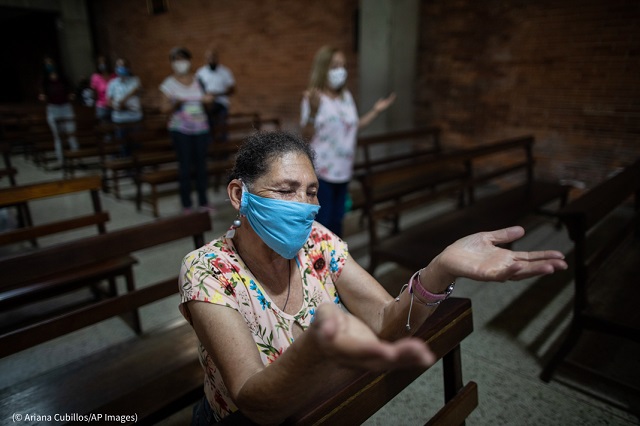The United States announced an additional $720 million in humanitarian aid to address the Syria crisis, both for Syrians in the country and those in need across the region. This brings U.S. support for affected populations to more than $12 billion since the beginning of the crisis.
The announcement came at a dialogue between the world’s top 10 humanitarian donor nations. The September 24 discussion was led by U.S. Deputy Secretary of State Stephen E. Biegun.
“To all those suffering: Let there be no doubt that the United States is with you,” he said. “And we are proud to stand with the partners here today.”
The United States provides more than any other nation to global humanitarian relief efforts. In 2019, the U.S. contributed more than $9 billion for international humanitarian crisis response. Nearly $70 billion in overseas humanitarian assistance has been donated over the past 10 years, according to the State Department.
The nine other top humanitarian donor countries and regions that joined the dialogue were Canada, the European Union, Germany, Japan, Saudi Arabia, Norway, Sweden, the United Arab Emirates and the United Kingdom.
“2020 has been exceptionally difficult for humanitarian action,” said Dr. Sibylle Sorg of Germany. “Too many humanitarian crises like Syria, Congo, Yemen deteriorated further, and new challenges appeared: the locust plague, the explosion in Beirut and, above all, COVID-19.”
Sorg suggested that the largest donors maintain their roles, but also reach out collectively to broaden the donor base in order to improve the sustainability of humanitarian assistance.

People attend Mass on August 16 at a church in Caracas, Venezuela, where COVID-19 has greatly increased the need for humanitarian assistance. (© Ariana Cubillos/AP Images)
“We all have the collective responsibility to address increasing humanitarian needs and ensure that human life and dignity are protected. The U.S. will continue to lead by example as the world’s largest donor for global health humanitarian assistance,” said U.S. Agency for International Development Acting Administrator John Barsa.
Barsa said that while the U.S. welcomes the ideas and solutions of others, “what we need is transparent assistance to save lives, not photo ops and faulty [protective equipment] that puts people even more at risk.”
Biegun highlighted the need for continued and expanded partnership in humanitarian crisis response, including from countries that claim the mantle of global leadership but do not show up when a crisis happens.
COVID-19 has not only increased the number of people who depend on humanitarian assistance, it has also affected the delivery of aid, according to the participants.
“Your work providing assistance to tens of millions of people in every corner of the globe, every day from Afghanistan to Yemen, Venezuela to Syria, South Sudan and beyond …,” Biegun said to the participants, “your combined humanitarian efforts have made a life-saving difference.”
International assistance has helped save nearly 700 million lives in the past 25 years, according to Biegun. Many international programs, such as agricultural development, cash and voucher handouts, health care, micro credits for businesses, water and sanitation programs, and support for women and girls have improved the lives of millions.
“The challenges we face today are unprecedented,” said Biegun, who hosted the virtual event. “We must continue to lead the world in responding to them.”
Banner image: Children fleeing the war in Syria sleep outside a bus station near the border between Turkey and Greece on March 7. (© Felipe Dana/AP Images)







COMMENTS0
LEAVE A COMMENT
TOP